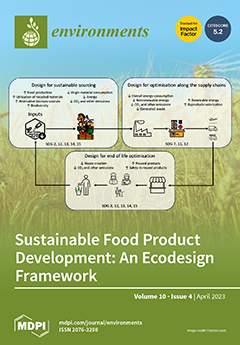The increasing levels of carbon dioxide (CO
2) in the atmosphere have become a major environmental challenge due to their contribution to global warming. The primary drivers of the increase in atmospheric CO
2 concentrations are the combustion of fossil fuels, deforestation,
[...] Read more.
The increasing levels of carbon dioxide (CO
2) in the atmosphere have become a major environmental challenge due to their contribution to global warming. The primary drivers of the increase in atmospheric CO
2 concentrations are the combustion of fossil fuels, deforestation, agricultural practices, or the production of cement, which play a significant role in the increase of CO
2 concentration in the atmosphere. However, efforts are being made to mitigate the negative effects of CO
2 emissions, including carbon capture and storage (CCS) technologies that aim to capture CO
2 from industrial processes and store it in underground geological formations. Methane, another potent greenhouse gas, is another major contributor to climate change and is mainly produced by agricultural activities such as livestock farming and rice cultivation. To address this, sustainable agricultural practices, such as reducing meat consumption and adopting climate-smart farming techniques, are crucial. Ultimately, a sustainable future can be secured for the planet and future generations by implementing effective measures, such as the use of sustainable energy sources, improvements in energy efficiency, responsible land use practices, and reducing the emissions of both CO
2 and methane.
Full article





